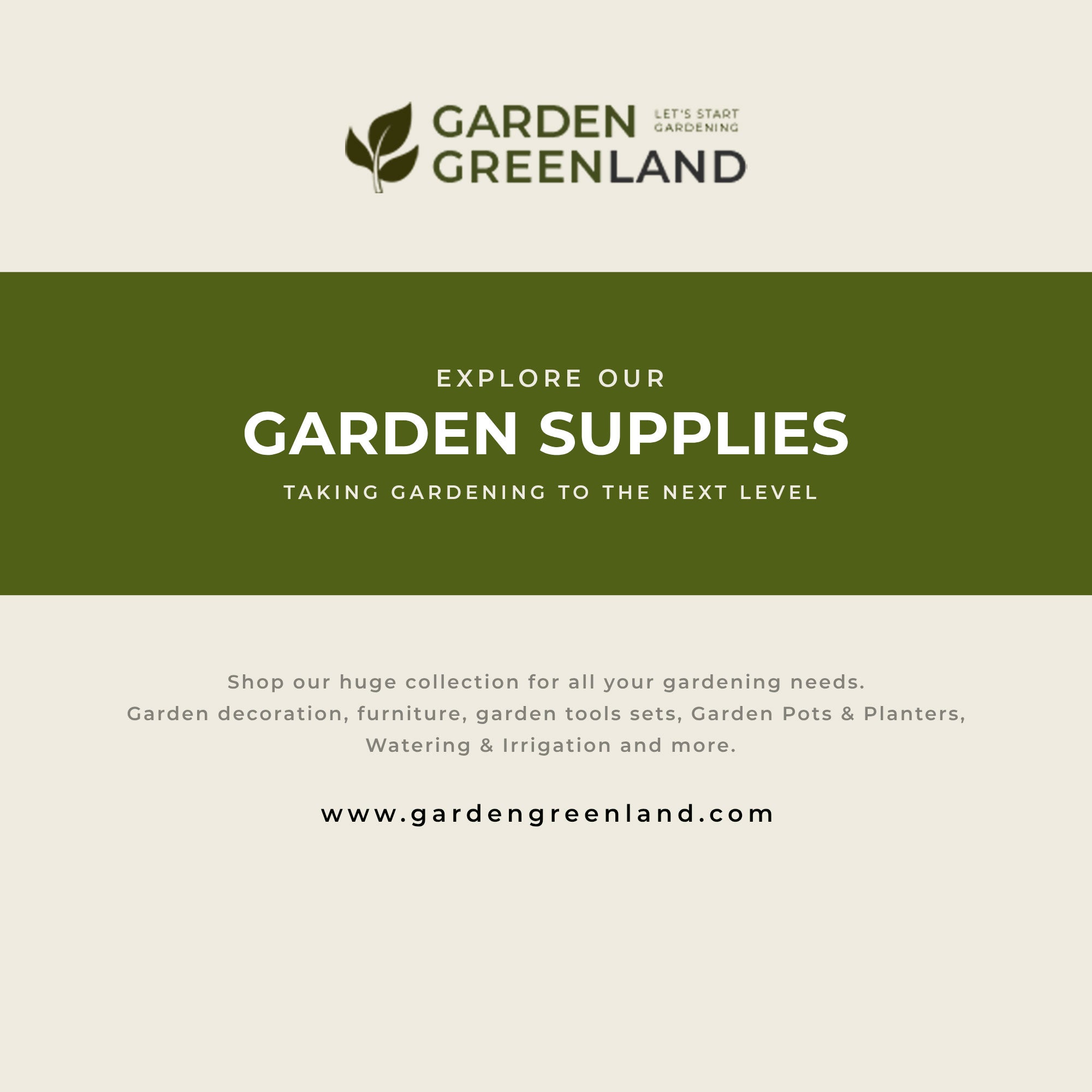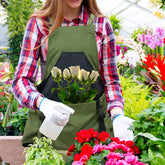How to Grow Potatoes in Pots or Bags: A Comprehensive Guide
Table of Contents
- Introduction
- Why Grow Potatoes in Pots or Bags?
- Selecting the Right Potatoes
- Supplies You'll Need for Growing Potatoes
- Step-by-Step Guide to Growing Potatoes in Pots or Bags
- Troubleshooting Common Issues
- Conclusion
- FAQ
Potatoes are one of the most beloved staple foods across the globe, renowned not just for their versatility but also for their delightful taste. Did you know that you can grow these delicious tubers in pots or bags, even if you have limited space? Whether you live in an apartment, have a small garden, or simply want to maximize your gardening potential, cultivating potatoes in containers is not only feasible but also incredibly rewarding.
At Garden Greenland, our journey began with a passion for the earth and a commitment to redefine the home gardening experience. We believe that everyone deserves to look and feel connected to nature. With our premium gardening products, we empower gardeners of all levels to embrace their green thumb and enhance their home and garden spaces. In this guide, we will explore how to grow potatoes in pots or bags, providing you with everything you need to know for a successful harvest.
Introduction
Growing your own food can be a fulfilling endeavor, and potatoes are a fantastic crop to start with. They are relatively easy to grow, highly nutritious, and can be stored for long periods. The method of growing potatoes in pots or bags not only saves space but also allows you to control soil quality and drainage, leading to healthier and more productive plants.
By the end of this blog post, you will learn the step-by-step process of growing potatoes in containers, the best practices for caring for your potato plants, and tips for harvesting and storing your crop. We will also share insights into the various types of potatoes you can grow, the ideal conditions for their growth, and why using premium products from Garden Greenland can enhance your gardening experience.
What You'll Learn
- The benefits of growing potatoes in pots or bags.
- How to select the right type of potatoes for container gardening.
- Detailed steps to plant, care for, and harvest your potatoes.
- Tips for troubleshooting common issues.
- The advantages of using high-quality gardening products.
So, are you ready to dig into the delightful world of potato gardening? Let’s embark on this journey together!
Why Grow Potatoes in Pots or Bags?
Growing potatoes in pots or bags offers numerous advantages. Here are some compelling reasons why you should consider this method:
Space Efficiency
For those with limited gardening space, such as apartment dwellers or those with small yards, pots and bags provide an excellent alternative. You can place them on patios, balconies, or even indoors, ensuring you can still enjoy home-grown potatoes.
Improved Soil Control
When you grow potatoes in containers, you have full control over the soil quality. You can choose the right potting mix to provide optimal nutrients, drainage, and aeration. This is particularly important for potatoes, as they thrive in well-draining, loose soil.
Pest and Disease Management
Container gardening can help minimize pest and disease issues, as you can easily move your containers if you notice problems. Additionally, using fresh potting soil in bags reduces the risk of diseases that commonly affect potatoes.
Easy Harvesting
Harvesting potatoes from bags or pots is a breeze. You can simply dump out the contents or reach into the bag to retrieve your potatoes, making the process far more manageable than digging in a traditional garden.
Versatile Growing Conditions
Potatoes thrive in sunny conditions, and using bags or pots allows you to position them in the best spots to receive maximum sunlight. This flexibility can lead to better yields.
Sustainability
With the right approach, growing potatoes in containers can be a sustainable practice. By using eco-friendly materials and high-quality potting mixes, you can minimize your impact on the environment.
Selecting the Right Potatoes
Choosing the right type of potatoes is crucial for a successful container gardening experience. Here are some popular varieties to consider:
1. Fingerling Potatoes
Fingerling potatoes are small, elongated tubers that are perfect for container gardening. Their unique shape and flavors make them a favorite among chefs and home cooks alike.
2. New Potatoes
New potatoes are harvested early in the season and are typically small and tender. They are delicious and can be grown in containers for a quick harvest.
3. Yukon Gold
This variety is prized for its creamy texture and buttery flavor. Yukon Gold potatoes are versatile and can be used in various dishes.
4. Red Potatoes
Red potatoes have a smooth, red skin and are known for their waxy texture. They hold their shape well when cooked, making them ideal for salads and roasting.
5. Russet Potatoes
Russets are the classic baking potato. They have a rough, brown skin and are perfect for making fluffy mashed potatoes or baked dishes.
Choosing Seed Potatoes
When selecting seed potatoes, it's essential to choose certified seed potatoes from a reputable source. These potatoes are disease-free and will provide a better yield than grocery store potatoes, which may be treated with chemicals to inhibit sprouting.
Supplies You'll Need for Growing Potatoes
Before we dive into the planting process, let's gather the necessary supplies:
- Potato Grow Bags or Containers: We recommend our Garden Buildings Collection for high-quality, durable grow bags designed specifically for potatoes.
- Seed Potatoes: Choose your favorite varieties based on your taste preferences.
- Potting Mix: A quality potting mix is crucial. You can use our Garden Equipment Collection for premium organic potting mix.
- Fertilizer: A balanced fertilizer will help provide the nutrients your potatoes need.
- Watering Can or Hose: Ensure you have a reliable method for watering your plants.
- Garden Tools: Basic tools such as a trowel and gloves can make the process smoother.
Step-by-Step Guide to Growing Potatoes in Pots or Bags
Now that we have everything ready, let’s go through the steps of growing potatoes in containers:
Step 1: Prepare Your Containers
Choose your containers or grow bags based on the number of seed potatoes you plan to plant. Ensure that they have adequate drainage holes to prevent waterlogging. If using bags, fold down the top edge to create a cuff that can be unfolded as the plants grow.
Step 2: Prepare the Soil
Fill your containers with a high-quality potting mix. If you’re using a mix without fertilizer, incorporate a balanced fertilizer according to the manufacturer's instructions. Aim for a light, well-draining soil that retains moisture without becoming soggy.
Step 3: Cut and Prepare Seed Potatoes
If your seed potatoes are large, cut them into chunks, ensuring each piece has at least one "eye" (the sprouting point). Allow the cut pieces to dry for a day or two before planting to help prevent rot.
Step 4: Plant Your Potatoes
Place about 4-6 inches of potting mix in the bottom of your container. Lay the seed potatoes on top, spacing them about 12 inches apart. Cover them with another 3-4 inches of potting mix. Water gently to moisten the soil.
Step 5: Water and Monitor Growth
Keep the soil consistently moist but not soggy. Water your potato plants regularly, especially during dry spells. In warm weather, you may need to water daily. Watch for green shoots, which will appear in about 1-2 weeks.
Step 6: Hill Your Potatoes
As your plants grow and reach about 6-8 inches in height, it's time to "hill" them. This process involves adding more soil around the base of the plants, covering about a third of the stem. This encourages the development of more tubers. Repeat this process every few weeks as the plants grow taller, until the container is full.
Step 7: Fertilize
Every few weeks, apply a balanced fertilizer to ensure your potato plants receive adequate nutrients. Follow the instructions on the fertilizer packaging to avoid over-fertilizing.
Step 8: Watch for Flowers
Potato plants will produce flowers, which is a sign that tubers are forming underground. Depending on the variety, this may occur 6-10 weeks after planting. You can harvest "new" potatoes at this stage if desired.
Step 9: Harvest Your Potatoes
When the foliage begins to yellow and die back, it's time to harvest your potatoes. Stop watering your plants a week or two before harvesting to allow the skins to toughen up. To harvest, gently tip the grow bag on its side and sift through the soil to collect your potatoes.
Step 10: Cure and Store
After harvesting, allow your potatoes to cure in a cool, dark, and well-ventilated area for a few days to harden their skins. Store them in a cool, dry place away from light to prevent greening.
Troubleshooting Common Issues
Even seasoned gardeners can encounter challenges when growing potatoes in pots or bags. Here are some common issues and how to address them:
1. Poor Growth
If your potato plants are not growing well, it may be due to inadequate sunlight, poor soil quality, or insufficient watering. Ensure your containers receive at least 6-8 hours of sunlight daily and use quality potting mix.
2. Pest Problems
Watch for common pests such as aphids and Colorado potato beetles. Monitor your plants regularly and remove any pests by hand or use organic pest control methods.
3. Diseases
Potato blight is a common issue for potato plants. Keep your plants well-aerated and avoid overhead watering to minimize disease risk. If you notice any signs of blight, remove affected leaves immediately.
Conclusion
Growing potatoes in pots or bags is a rewarding and accessible way to enjoy home-grown produce, regardless of your gardening space. By following the steps outlined in this guide, you’ll be well on your way to cultivating a bountiful harvest of delicious potatoes.
At Garden Greenland, we are dedicated to providing high-quality gardening essentials that empower you to enhance your gardening experience. From premium potting mixes to durable grow bags, our products are designed to support your gardening journey.
So, are you ready to dig in and start your potato-growing adventure? With the right tools, knowledge, and a little patience, you can enjoy the fruits of your labor and savor the wonderful taste of freshly harvested potatoes.
FAQ
1. How many potatoes can I grow in a bag? Typically, you can plant 3-5 seed potatoes in a standard-sized grow bag, depending on the variety.
2. When is the best time to plant potatoes? Plant your potatoes after the last frost date in your area, usually in early spring.
3. How often should I water my potato plants? Potato plants require consistent moisture. Water them regularly to keep the soil evenly moist, especially during dry spells.
4. Can I grow potatoes indoors? Yes, potatoes can be grown indoors as long as they receive adequate sunlight. Consider using grow lights if natural light is insufficient.
5. What should I do if my potatoes turn green? Green potatoes are a sign of exposure to sunlight and should not be eaten. Cover any exposed potatoes with soil to prevent greening.
By embracing the natural process of growing your own food, you’re not only enhancing your connection to nature but also contributing to a more sustainable lifestyle. Happy gardening!









